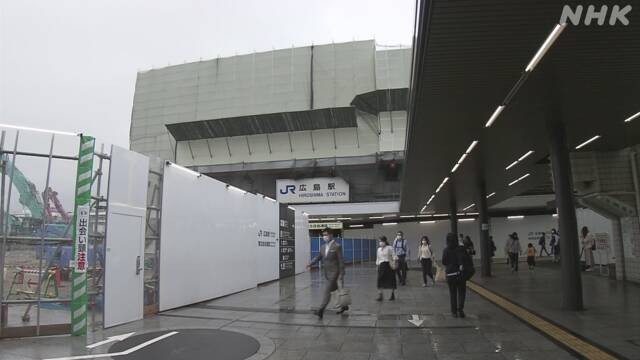On the morning of the 17th, which was the first weekday when the state of emergency was expanded to Hokkaido, Hiroshima, and Okayama, big data analysis of the number of people near major stations in each region showed a decrease of about 5% from last week. I found out that it was.
NHK will use big data collected by NTT DoCoMo from mobile phone base stations in a form that protects privacy, and will use big data in areas where the state of emergency has expanded, about Hokkaido, Hiroshima, and Okayama on the 17th near major stations 8 am We analyzed the number of people in the time zone.
As a result, compared to last Monday (10th), all of them decreased by about 5%,
▽ 4% near Sapporo station,
▽ 5% near Hiroshima station,
▽ 6% decrease near Okayama station. ..
On the other hand, compared to the Monday average during the first state of emergency declaration last year, both increased by
18% near Sapporo Station
, 14% near Hiroshima Station, and
20% near Okayama Station. was.
In addition, the number of people in Tokyo and Osaka, where the third state of emergency was declared in the fourth week, was almost flat compared to last Monday, with almost
no change near Osaka Station and
1% near Tokyo Station. Was an increase.
The number of people in 10 prefectures with priority measures such as prevention of spread
We also analyzed the number of people around 8 am on the 17th near major stations in each of the 10 prefectures where "priority measures such as prevention of spread" have been implemented, which has expanded to Gunma, Ishikawa, and Kumamoto.
Of these, the three prefectures where the priority measures were implemented from the 16th, compared to the number of people last Monday (10th)
,
▽
increased by 4% near Takasaki station in Gunma
,
▽
almost unchanged near Kumamoto station,
▽ There was a 1% decrease near Kanazawa Station in Ishikawa.
In all seven prefectures where priority measures have already been implemented,
▽ Ehime's Matsuyama-shi station area increased by 4%,
▽ Okinawa's prefectural office front station and ▽ Saitama's Omiya station area increased by 1
%
compared to last Monday.
% Increase,
▽ Mie Yokkaichi station area and ▽ Kanagawa Yokohama station area were almost unchanged,
▽ Chiba station area was 1% decrease,
▽ Gifu station area was 3% decrease.
On the other hand, compared to the average number of people on Monday during the first state of emergency last year, the number of people in each region has increased, ranging from 14% to 51%.
In front of JR Hiroshima Station
On the 17th, the first weekday since the state of emergency was declared in Hiroshima Prefecture on the 16th, commuters were seen heading to work or waiting in line for the bus in front of JR Hiroshima Station. ..
In response to the addition to the target area of the state of emergency, Hiroshima Prefecture has reduced the chances of going out by half and the number of people who go to work by 70% in order to reduce the chances of contact between people. I am looking for it.
In front of JR Hiroshima Station on the morning of the 17th, we saw commuters heading to work and waiting in line for the bus.
Of these, a 20-year-old office worker said, "I'm not out on Saturdays and Sundays, but from today I want to make good use of telework and staggered work while paying attention to infection control." ..
A man who came from Osaka on a business trip said, "There were few people on the Shinkansen, but there were many people at the station. We have no choice but to deal with the new coronavirus."
A woman in her 60s in Fuchu-cho said, "I can't help going to work because I can't work remotely."
According to the prefecture, the number of people around JR Hiroshima Station on the 16th, which was the first day of the state of emergency, decreased by 31.9% at 7:00 am and 18.2% at 2:00 pm compared to a week ago. about it.
In addition, compared to the end of January last year before the spread of the infection, it decreased by 23% at 7:00 am and 61.4% at 2:00 pm.

